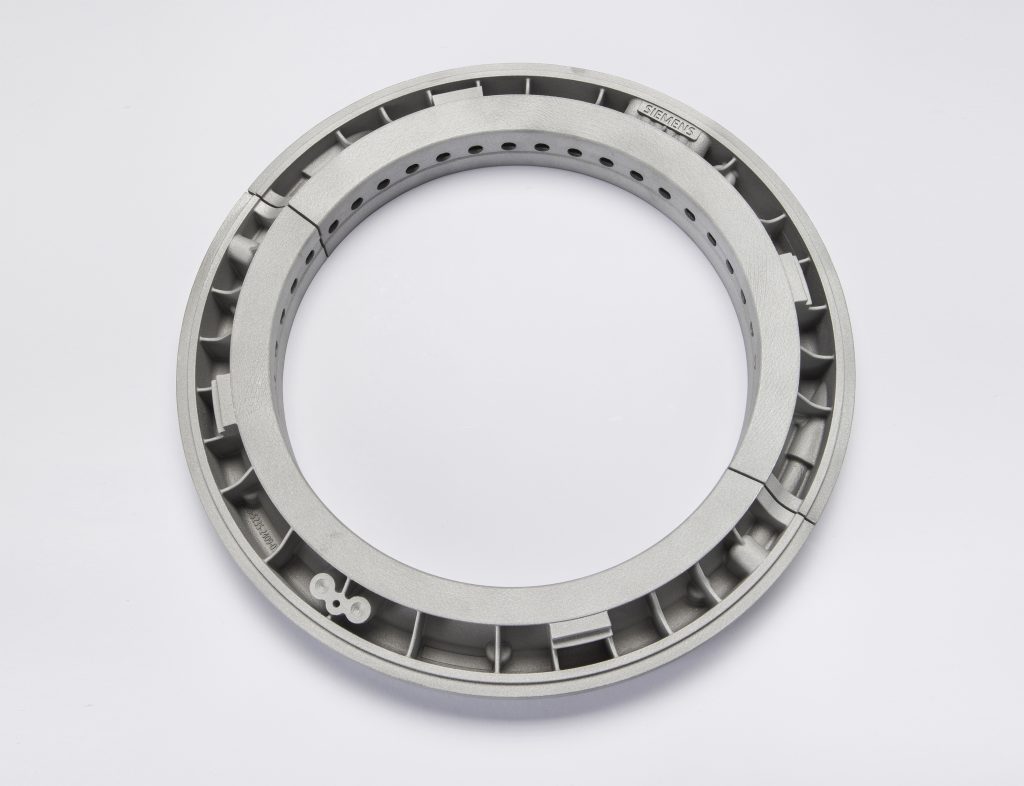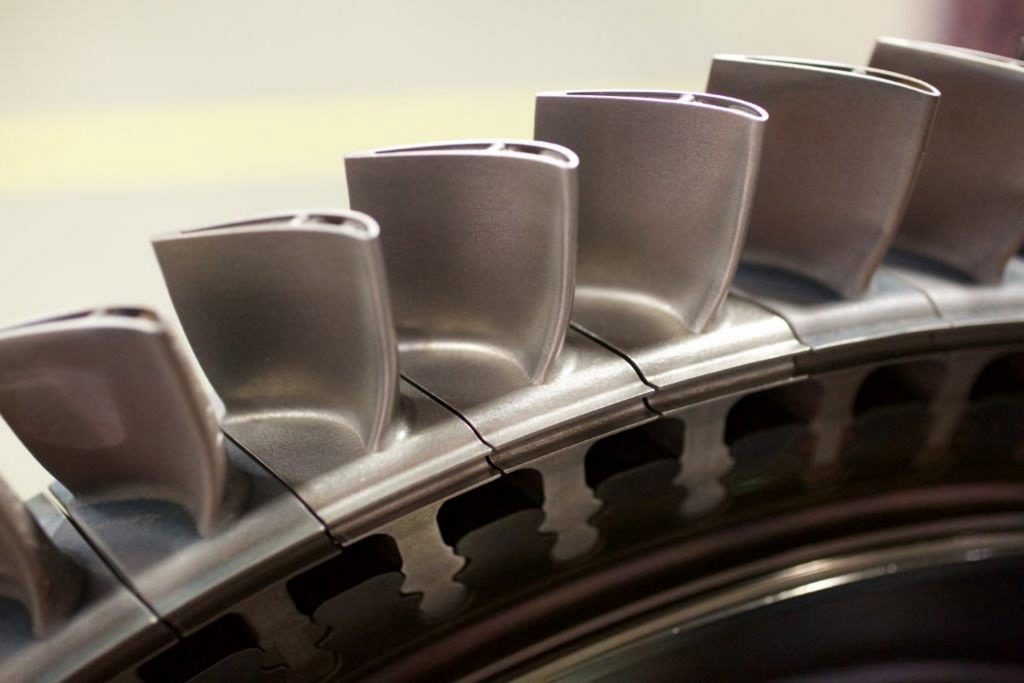Following the award-winning 3D printed gas turbine blade of 2017, Siemens has reached another industry milestone. This time, oil sealing rings have become the first metal 3D printed parts to be used in an industrial steam turbine.
Now installed on an ST-300 operating at the JSW Steel Ltd. plant in Salem, India, the oil sealing rings are the product of years of research, development and testing between sites in Germany, India and Sweden.
To learn more about the reasons for adopting additive in these parts, I spoke to Armin Truebel, Siemens Product Manager for Industrial Steam Turbine Service.

40% reduction in lead times
Oil sealing rings are responsible for keeping oil separated from steam inside a turbine using pressurized air. Relatively complex by design, and initially composed of two parts, the rings were selected by Siemens engineers for consolidation via additive manufacturing.
Truebel explains, “Additive manufacturing offers a degree of design freedom that allowed us to implement design features that could not have been realized otherwise.”
Through design for additive manufacturing (DfAM), the team were able to “re-think established components and provide functional enhancements over the standard design.” Ultimately, the process led to an estimated lead-time reduction of up to 40%.
“In addition the near-net-shape result of the printed product,” comments Truebel, “combined with the integration of former consecutive manufacturing steps in the printing step, we see the potential to significantly reduce lead times.”
3D printing exceeds performance of traditional manufacturing
Siemens has not disclosed the metal additive machine or materials used to makes the oil rings, however Truebel confirms, “We decided for an alloy to match – and exceed – the mechanical and environmental requirements for the part operation over its lifetime,” and, “The alloy was processed on a current generation powder-bed based 3D printer.”
In previous projects, the company has used both EOS and SLM Solutions metal powder bed fusion based 3D printers. It also has an existing partnership with metal 3D printer manufacturer TRUMPF, so the printer used could be one of many different options.

“Generally speaking,” Truebel conlcludes, “for us it is important that, with the implementation of new design features, we can achieve better performance in manufacturing and operation through additive manufacturing.”
Through 3D printing these oil sealing rings, and other components, Siemens hopes to optimize and streamline its services in maintenance and repair.
For updates on the latest groundbreaking additive manufacturing applications subscribe to the 3D Printing Industry newsletter, follow us on Twitter, and like us on Facebook.
Search for 3D Printing Jobs here.
Featured image shows metal oil sealing ring for an industrial steam turbine, designed and produced by Siemens using additive manufacturing. Photo via Siemens



